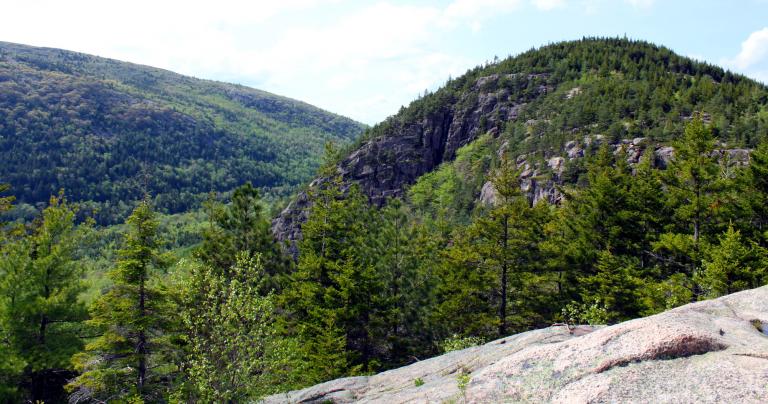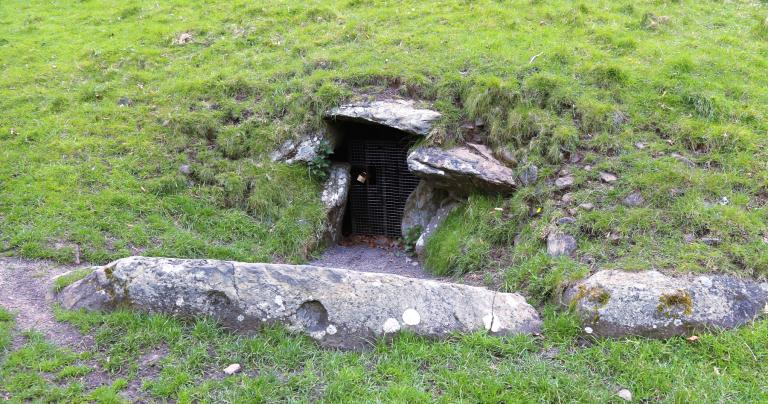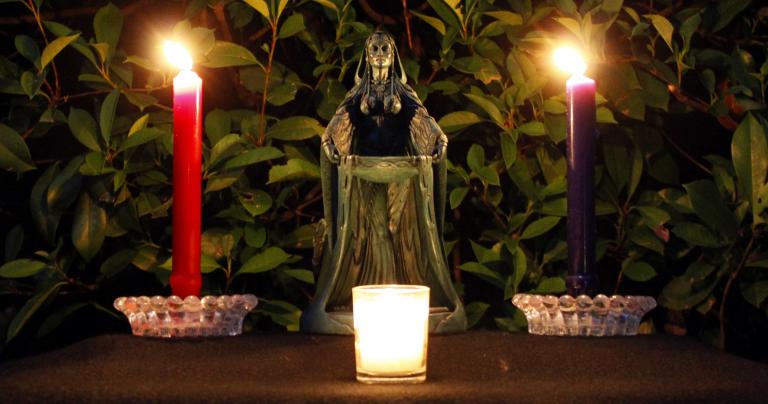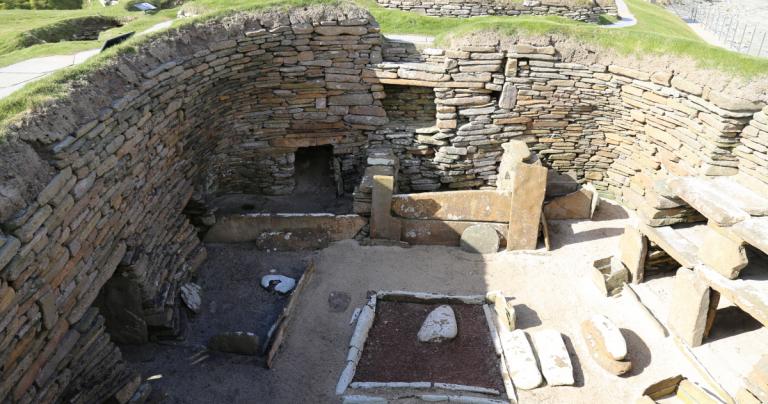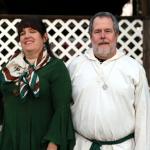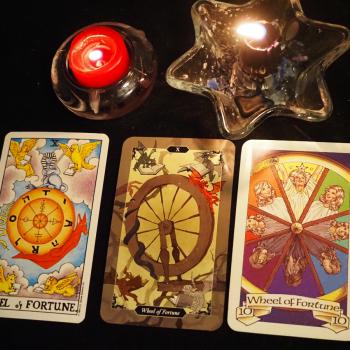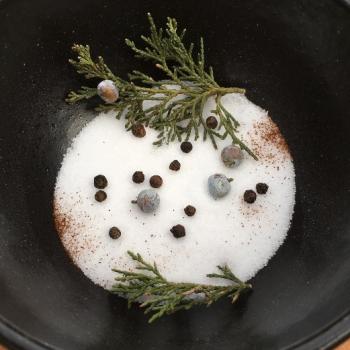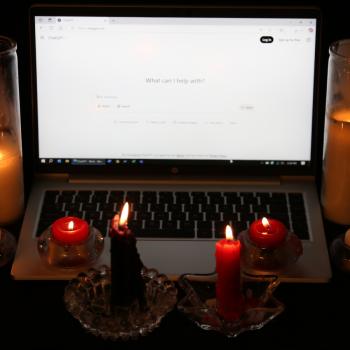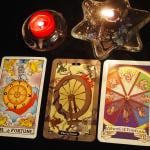The Denton Unitarian Universalist Fellowship
August 12, 2018
“Fear is the path to the dark side. Fear leads to anger… anger leads to hate… hate leads to suffering.”
So said the great philosopher Master Yoda. I’m a Pagan and not a Jedi, and I’m leery of Hollywood wisdom, but there is much truth in that saying. Sooner or later, fear leads to suffering.
We live in fearful times. I won’t torture you with a litany of all the political, economic, social, and environmental challenges that have us anxious – that could keep us here all day.
And as if we didn’t have enough real problems to worry about, political consultants have figured out that if they can make us afraid, we’ll vote for candidates who promise to take care of us, even if all they promise is something as vague as “make American great again.”
Meanwhile, advertisers make us afraid of smelling bad, driving an unfashionable car, and the worst sin of all, getting old. They count on our fears to make us buy what they’re selling.
On the other side, there are people who spout a lot of naïve psychobabble about fear. They say F-E-A-R stands for “False Evidence Appearing Real.” They claim fear is only an illusion, they attempt to shame those who are afraid, and they offer clichéd solutions with no more power than a plastic charm made by a fictional witch.
Sometimes fear is rational. Other times it’s not. Most times it’s a little of both, and that makes it really complicated.
I’ve walked confidently into situations that would send most people into panic attacks. And I’ve broken down in fits of crying terror over possibilities so remote no reasonable person should care. If fear is complicated, our responses to fear are impossibly complex.
But if I’ve learned anything about fears, it’s that examining them and thinking about them and talking about them can be very helpful. So this morning I want to explore the nature of fear and fears and see where it takes us. I don’t just want us to overcome our fears. I want us to become invincible.
Fear can be useful
To start with, let’s understand that fear can be useful. Most of us have a fear of spiders and snakes, to one degree or another. While most spiders and snakes are not poisonous, some can be deadly, and the bites of those who aren’t are still quite painful. Humans have an evolutionary fear of spiders and snakes, a fear shared by our primate relatives like chimps and gorillas. That means it’s several million years old.
And it’s effective. Our fear helps us recognize real risks so we can avoid them.
Useful fear is a beginning, not an end. We’re afraid of spiders and snakes and so we stay away from them, but we may have a need to go into areas where we’re likely to encounter them. And sometimes they just show up, seemingly out of nowhere. So if we are wise, we are motivated to learn about the objects of our fears.
Which snakes are venomous and which aren’t? In which locations and at what times of day are they likely to be found? How can they be handled safely? And what are the countermeasures if, despite our best efforts, we’re bitten by a rattlesnake?
Fear can motivate us to learn, and learning reduces our fears.
But not all fears can be managed so simply and reasonably.
Fear of the unknown
In his non-fiction book Danse Macabre, horror writer Stephen King explained how not showing the monster is scarier than letting it be seen:
After mounting apprehension about the fear we are about to confront, somebody eventually has to respond to the scratching sound at the door and throw it open — only to reveal, before our terrified eyes … a ten-foot-bug!
And no sooner do we register that fear – hairs standing erect on our necks, gooseflesh crawling up our arms – than we begin assessing and processing it; in an instant, an equal-and-opposite reaction sets in, tinged with disappointment: “Oh,” we think. “A ten-foot bug. That I can deal with. I was afraid it was going to be a hundred-foot bug!”
The imagination is a powerful thing. It lets us see things that have never existed, so we can make them real. Every technological invention and every work of art began as an act of imagination. Our imagination magnifies our possibilities.
Our imagination can also take an unknown and create a seemingly infinite number of possible outcomes, most of which are unlikely and none of which are pleasant.
And there is no bigger unknown than death, and what comes afterwards.
Overcoming the fear of death
I’ll be honest – I’ve never really feared death. I went to a lot of funerals as a small child. It was presented in a rather matter-of-fact manner: people got old, they got sick, and they died. Sometimes something bad happened and they died before they got old. But good people went to heaven when they died and we didn’t know any bad people. By the time I started questioning the religious assumptions behind that concept, the idea of death as a natural transition was firmly fixed in my mind.
But the thought of dying a bad death has always scared me. Good Friday sermons on crucifixion. Horror movies with medieval tortures. And worse – because it’s all too possible – the kind of lingering, painful deaths we inflict on our loved ones with medical treatment after medical treatment designed to prolong life by a few more weeks, because we’re afraid to let them go.
Logic and reason can dispel the fears of dying like Mel Gibson in Braveheart – short of falling into the hands of Daesh (the terrorist group that likes to call themselves the Islamic State) it’s not going to happen. For the things that are realistically possible, I have an advance medical directive, with copies in the hands of those who would be called on to make decisions for me if I’m incapacitated. And I support death with dignity and physician assisted suicide laws. I hope to live to a ripe old age, but I’d rather die early than die badly.
Mark Twain said “I do not fear death. I had been dead for billions and billions of years before I was born, and had not suffered the slightest inconvenience from it.”
This we know – all that lives will someday die. It’s happened to everyone who came before us, and it will happen to everyone who comes after us. Death is universal – can it really be all that bad?
Overcoming the fear of a bad afterlife
Death is certain, but what comes after death is the biggest unknown of all. Different religions have radically different ideas about the afterlife, and many of them are decidedly unpleasant. The Egyptians promised a place with Ra in the Boat of a Million Years for those whose hearts are as light as a feather, but oblivion for everyone else. The Greeks (or at least, some of them) offered the Elysian Fields for heroes, but a rather dull afterlife for the masses, and torments in Tartarus for those who particularly offended the Gods.
I grew up Baptist – it is impossible to listen to hellfire and brimstone sermons week after week, year after year, and not be afraid of ending up in hell.
My journey out of fundamentalism is its own story. Rejecting the false premises of fundamentalism with evidence and reason was the start. Reading books from different religions and talking to different practitioners teaches us that there are many possible afterlifes. Do they all exist? Do any of them exist? I don’t know. But I do know that after studying the traditional afterlifes of the Egyptians, Greeks, Celts, and Norse – and for that matter, of universalist and other progressive Christians – the certainty of fundamentalists seems rather silly.
Still, this was only a start. Stories, concepts, and experiences from early childhood have deep tentacles that do not let go easily. Reason alone was never enough to rid me of the fear of hell. I could not remove those beliefs – I had to crowd them out with something better.
In 2003 I participated in my first Pagan initiation. Initiations are traditional in many forms of Paganism – I was certain this was the path for me and I wanted a ceremony to confirm that choice. The group I was working with set a date and began to make preparations.
In the weeks leading up to the initiation, I kept channel-surfing onto TV preachers talking about how everybody but them was going to hell. It sounded like a call to turn back. I knew this was what I wanted to do and I knew it was what I needed to do, but I was afraid.
In some traditional initiations, the candidate is challenged at knife-point with these words: “You who would cross the boundary between the worlds, have you the courage to face the tests which will be required? For I tell you, it is better to throw yourself upon this sacred blade and perish now than to attempt the trials with fear in your heart.”
Well that’s rather dramatic! But the real challenge isn’t to enter the circle with no fear. The real challenge is to move forward boldly in spite of your fears.
My desire for initiation was greater than my fear. I entered the circle. The details of that ritual are oath-bound and I will continue to honor that oath. But I can say that after all the oaths and object lessons there was a formal investiture. The priestess became a conduit for something magical, and at that point I experienced something I had never felt before.
And it felt right. My fear of hell and the angry old man in the sky was silent and it wasn’t noticed by its absence. All that was there was the call of the Gods and of Nature, a call I continue answering to this day.
I do not suggest that Pagan initiation is a universal cure for the fear of a bad afterlife. This was my journey – yours will be different. What’s important is that a positive religious experience crowded out the years of negative religious experiences. Reason provided the foundation, but experience made it real.
Dealing with the fear of ordinary hardship
We can debate what is or isn’t coming after death, but we can be sure that life will bring its share of ordinary hardships. We all encounter them, though they’re never distributed evenly or fairly.
Our Buddhist friends have an answer for this: let go of your desires and simply accept what is. I have tremendous respect for Buddhism, but I’m a Pagan. I’ll take the hardships of life in order to enjoy its beauties and pleasures.
If we know hardships are likely to occur, it makes sense to prepare for them. I do not expect to have a car wreck, but I still maintain auto insurance. We can try to avoid hardships: don’t smoke, drink in moderation, and wash your hands regularly.
More importantly, have confidence in your ability to deal with the ordinary hardships that come your way. Humans are resilient creatures. We can overcome pain and suffering, sickness and loss. You don’t know what you can handle until you have to handle it.
This can be problematic, especially when we’re talking to other people. You know, “pull yourself up by your bootstraps” or “take some personal responsibility!” How about we have a bit of compassion and exercise a bit of reason. The fact that you overcame your ordinary hardships doesn’t mean someone else can do the same, particularly if they’re playing at a higher level of difficulty due to systematic racism, sexism, and other forms of discrimination.
But what is unworkable as a universal solution can be quite helpful for individuals. No one has more of an impact on your life than you. Dealing with your hardships not only makes them better, it increases your confidence that you can deal with whatever comes next.
Ralph Waldo Emerson said “Do not be too timid and squeamish about your actions. All life is an experiment. The more experiments you make the better. What if they are a little coarse and you may get your coat soiled or torn? What if you do fail, and get fairly rolled in the dirt once or twice? Up again, you shall never be so afraid of a tumble.”
Drawing on our ancestors
Ancestor veneration is a nearly universal human impulse. Some religions place great emphasis on it and some place less, but walk into the homes your least religious friends and you’ll see pictures of grandparents and great grandparents, and mementos of all descriptions. It’s intuitive that we should remember and honor those who came before us.
We UUs like to say “that which is remembered, lives.” Whatever you believe or don’t believe about an afterlife, when we remember our ancestors, they live on in us. This is a good and holy thing.
But there are also practical benefits to honoring our ancestors. We are the descendants of people who survived wars, famines, and plagues. Our earlier ancestors survived an ice age.
And they didn’t just survive. They lived, and loved, and they built homes and traditions that made their way down to us. Because they lived, we are.
There’s a t-shirt I see occasionally at Pagan gatherings – it says “we’re the daughters of the witches you couldn’t burn.” Whether that’s historically true or not is irrelevant. It’s a reminder that our ancestors survived and succeeded during times that were at least as challenging as anything we face. We are their children – what they did, we can do too.
As with all spiritual practices, ancestor veneration works best if we build a solid foundation during good times. Set up a shrine to your ancestors. Do a bit of research, even if it’s just to call your cousin who’s really into genealogy and borrow their work. Speak the names of your ancestors, light candles in their honor, and tell their stories to your children, or just to yourself.
Then when trouble comes, we need not be afraid. We know our ancestors faced worse than this, and they made it through OK. So can we.
Becoming invincible
In his book The Chaos Protocols, author Gordon White talks about “becoming invincible,” which he defines as “the process of immunising yourself against the monoculture” and the fears it generates. Becoming invincible begins with reason: with learning what we need not fear, what we should fear, and how to mitigate the risks and dangers inherent in life.
But reason alone is not enough. Becoming invincible requires having enough first-hand experiences so you are confident in your ability to handle whatever comes your way. Some of this comes with age and the life experiences that go along with it. The first time I was handed a layoff notice because the factory where I worked was closing, I had a moment of panic and several weeks of intense fear. By the time I got my third notice – the one that would bring me to Texas in 2001 – I was like “oh well, here we go again.” I wasn’t happy about having to move, but I knew I could find another job before the old one ended, because I had done it twice before.
We need not experience every single possibility before losing our fear of them. Success in one area breeds confidence in many areas. A quote often misattributed to Eleanor Roosevelt but properly credited to Chicago Tribune columnist Mary Schmich says “do one thing every day that scares you” – not because we’re seeking thrills but because with each successive day, we can mark one more thing off the list of things we’re afraid of. We tried it, and even if we didn’t like it we still came out OK. The unknown is now known, and we’re not afraid of it anymore. After a few weeks, not only is the list of what we fear getting shorter, we’re starting to wonder why we ever had a list in the first place.
At its core, though, becoming invincible isn’t about overcoming fear. It’s about realigning the way you see the world and what’s really important.
What would you be afraid of if you knew, in the depths of your soul, that your value as a person is not dependent on your job or your wealth? What would you be afraid of if you knew your happiness isn’t dependent on your house, your clothes, or even your health? What would you be afraid of if you saw the world and your place in it as it really is, unobscured by the manipulative filters of advertising executives and political consultants?
This knowledge does not come from reading books or even from diligent study. It comes from years and years of dedicated and consistent spiritual practice: meditation, prayer, and devotion.
Or, it comes from a one-time first-hand ecstatic religious experience so powerful it rewires your consciousness, changes your foundational assumptions about what is and isn’t possible, and basically turns your life upside down.
These experiences happen in every religion. It’s the near-shipwreck that turned slave trader John Newton into the author of “Amazing Grace.” It’s Siddhartha sitting under the tree until he almost starved to death, and then suddenly he received enlightenment and became the Buddha. It’s the visions of Joan of Arc, that led to a teenage girl leading an army to victory in battle… and ended with her being burned at the stake.
These experiences happen to less famous people as well. And sometimes they come milder doses, though that approach may take multiple experiences over time to accomplish the same thing. But if you want to become invincible without years of work, be prepared to have your life turned upside down.
Am I invincible? No. There are still ordinary risks that I worry about more than I should. There are still things that, under the wrong circumstances, will send me into fits of panic and terror. But those things are far fewer than they used to be, and I’ve learned to recover from them faster that I could years ago.
Some of that comes from reason – from learning what should be feared and what shouldn’t, and from learning to do a better job of risk assessment. Some of it comes from experience – from dealing with various unpleasantries and coming out OK. Much of it comes from spiritual practice – from enough prayer, meditation, and devotion to know in my soul that my true calling is to be a Druid and a priest, and if I do that well, everything else will take care of itself.
And some of it comes from first-hand ecstatic religious experiences that make it impossible for me to believe that either fundamentalists or materialists have a clue as to what the world is really like.
We live in fearful times, but through reason, experience, and becoming invincible, we need not be afraid.
Benediction
An excellent way of dispelling fear is humor. Harry Potter fans are familiar with the riddikulus spell, which turns a scary boggart into something silly that can be laughed away. And so in the spirit of humor, let me leave you with this quote from British author Terry Pratchett:
“A witch ought never to be frightened in the darkest forest … because she should be sure in her soul that the most terrifying thing in the forest was her.”
Go in courage, go in power, and go in peace.


